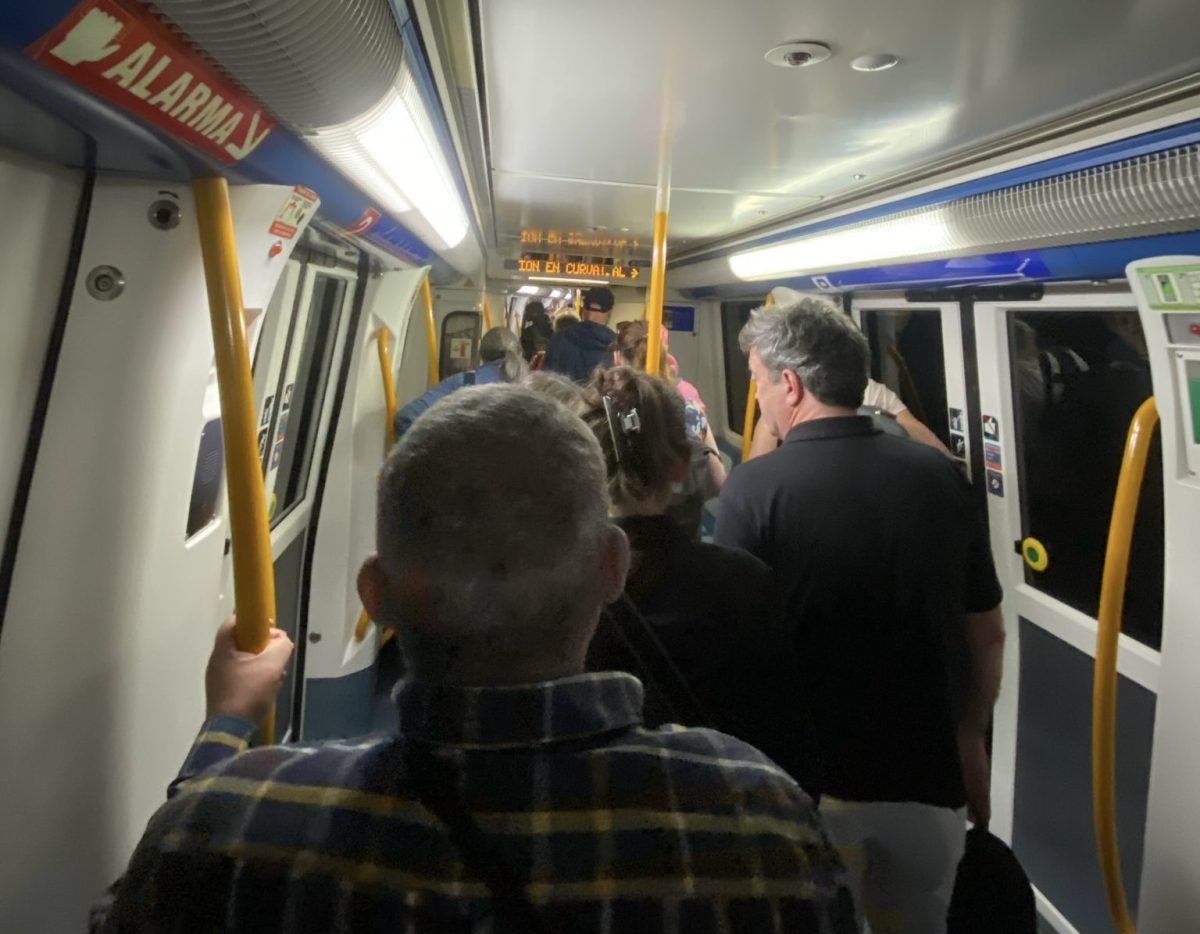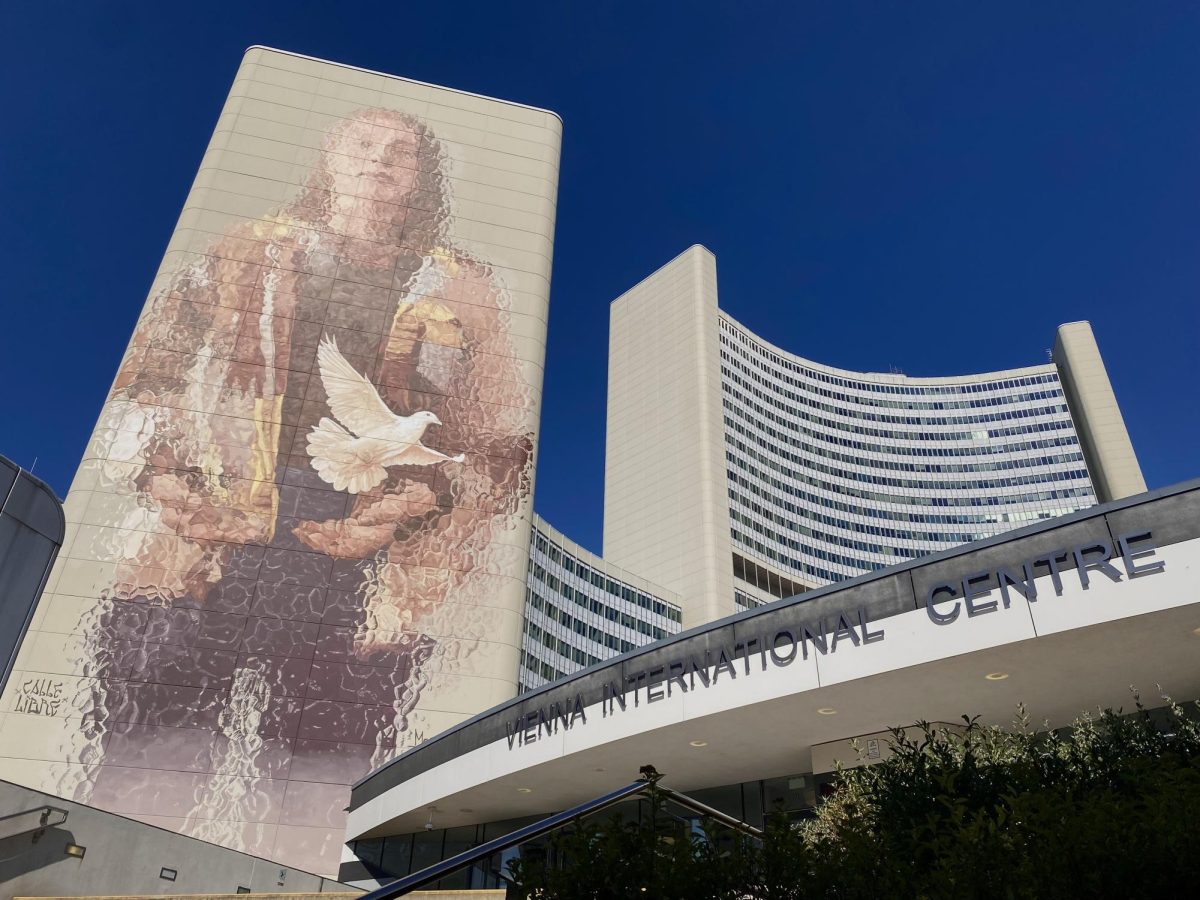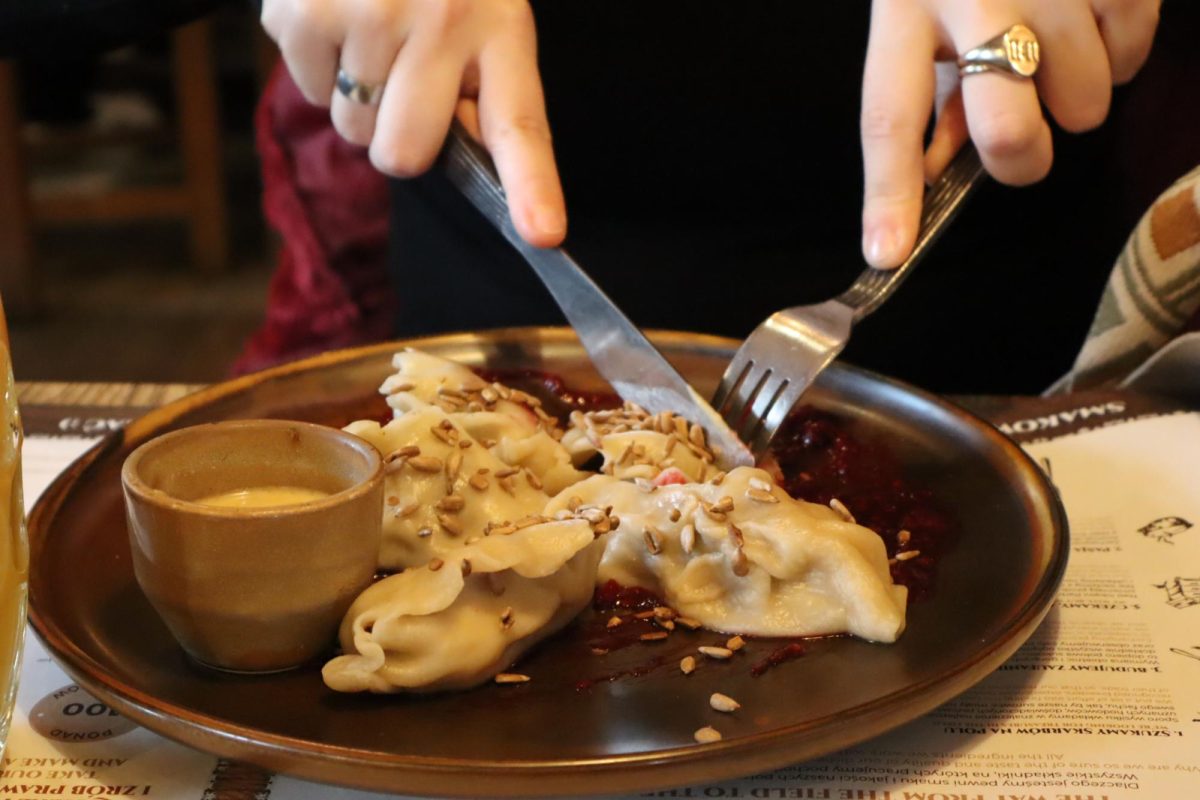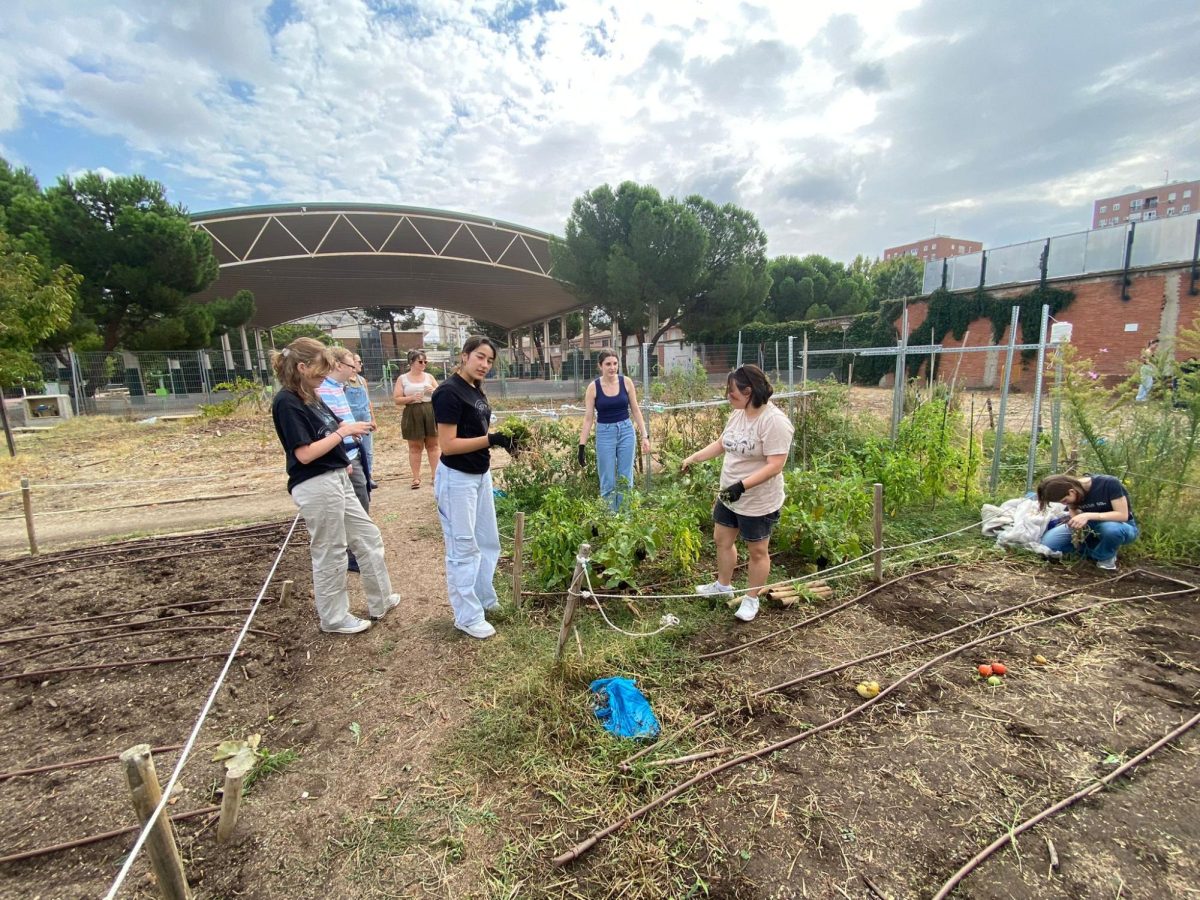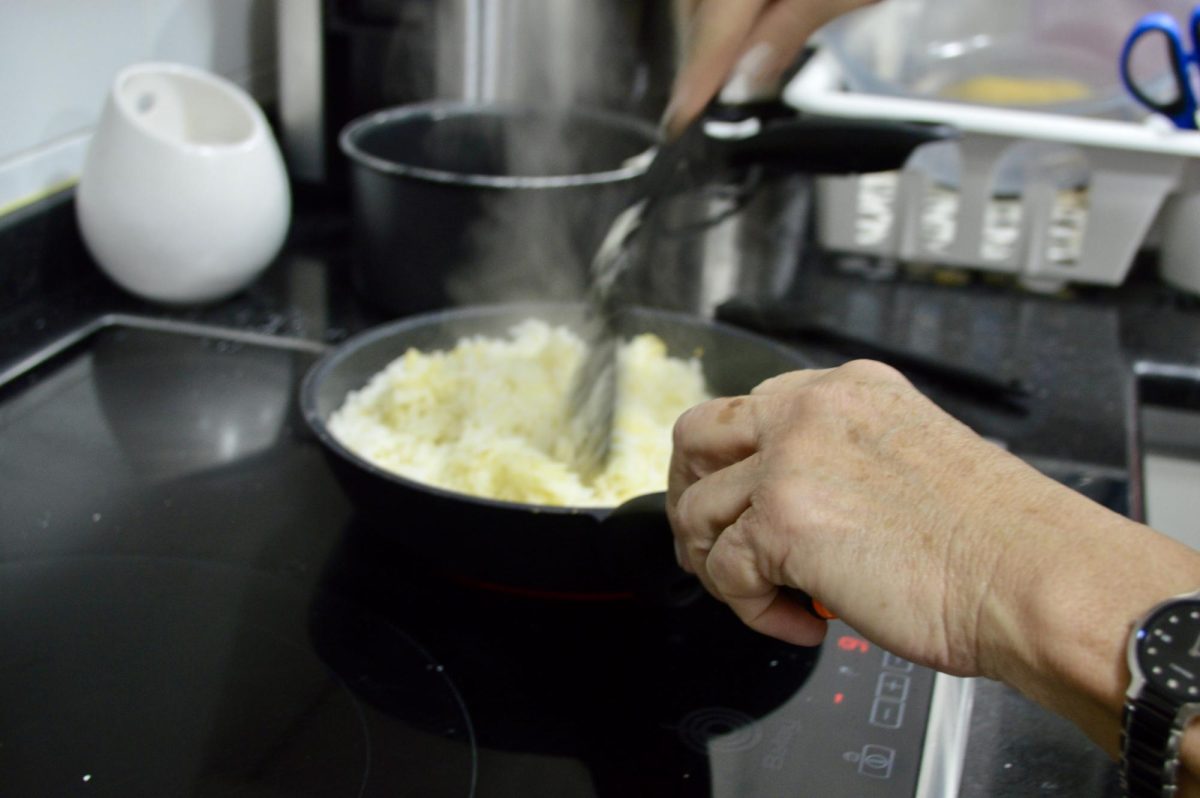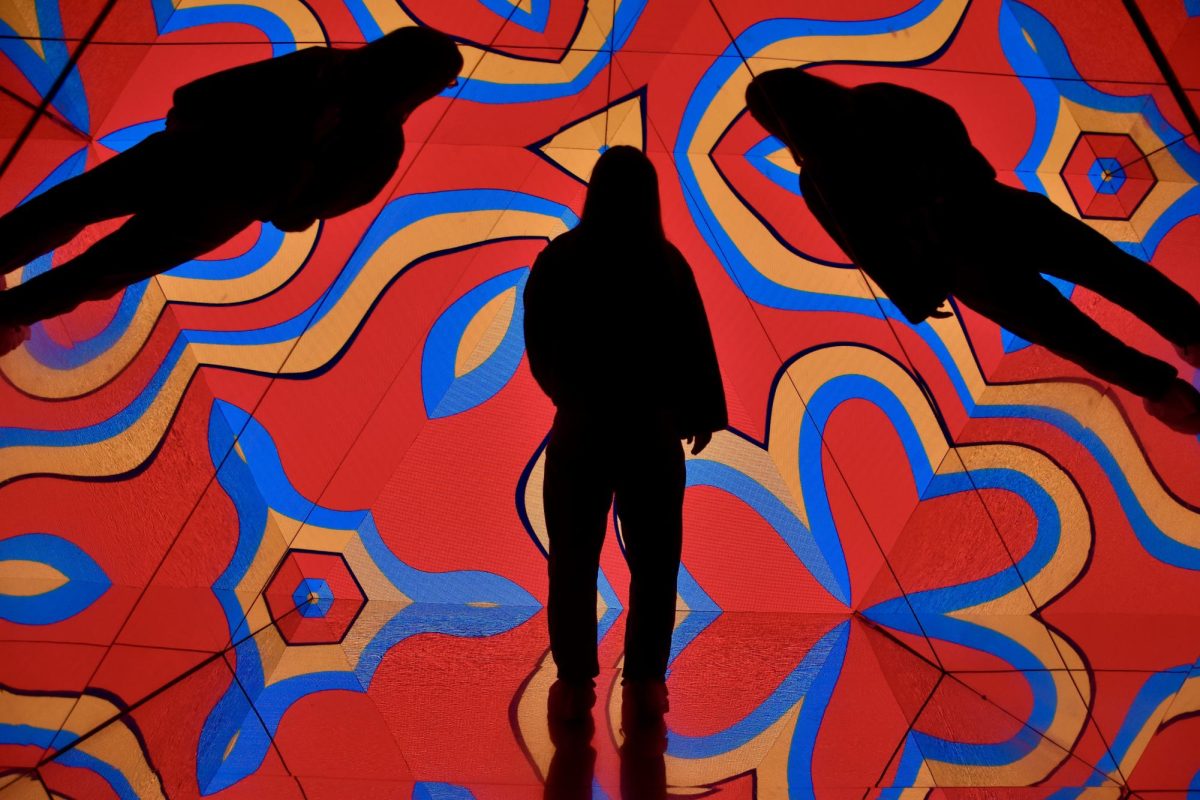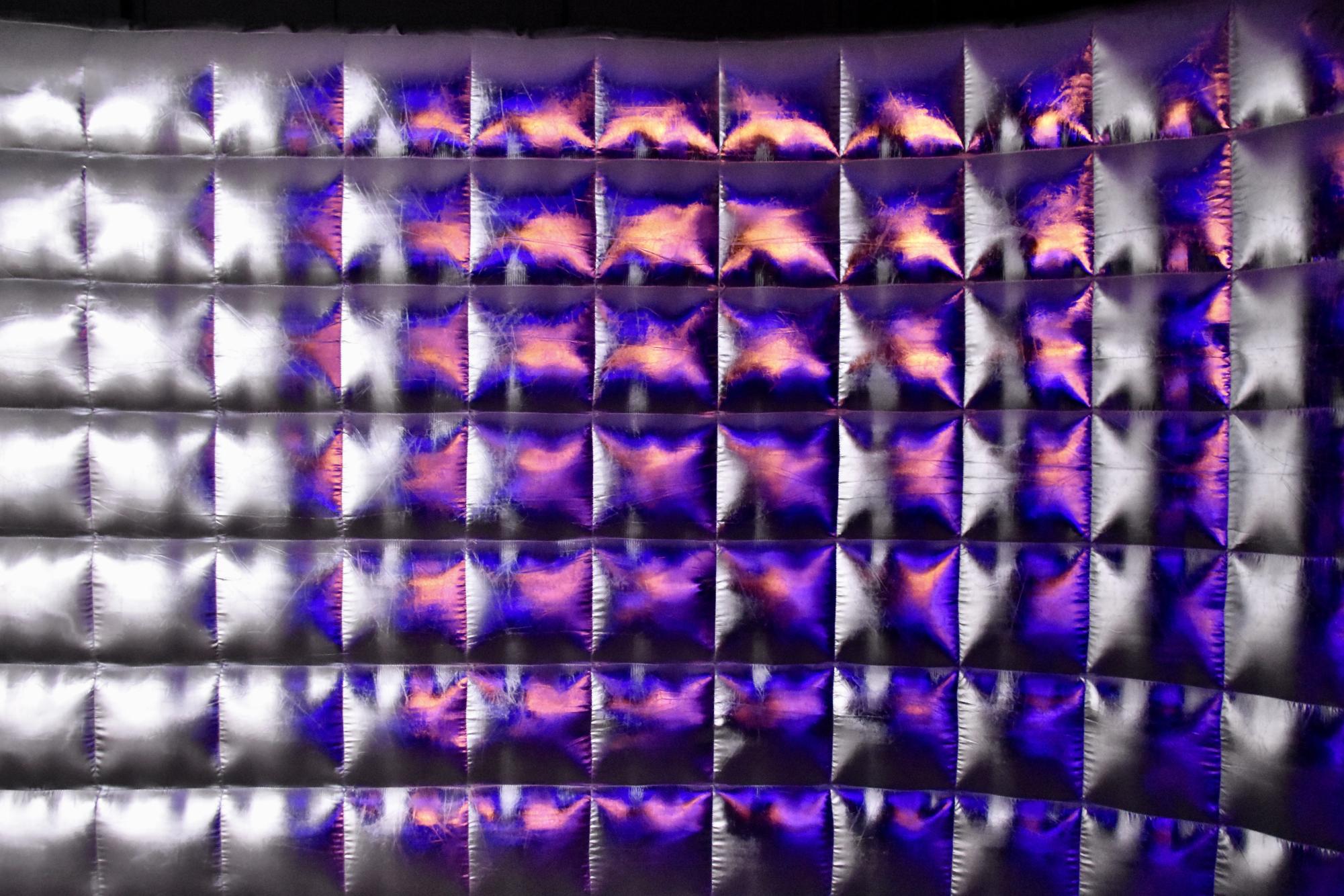Tucked away in a quiet corner on Calle Segovia behind Plaza Mayor sits one of Madrid’s newest and brightest museums: Museo de La Luz (Light Museum). From the outside, the museum blends in with the rest of the buildings’ exteriors in the touristy center neighborhood. The inside, however, teleports its visitors to a glowing new universe.
Museo de la Luz is one of the latest museums to follow suit in the rising popularity of interactive museums, allowing visitors to engage with the artwork beyond what the eye can see. Museum-goers can bend and control light through the motions of a bird in flight or lights that switch on by the beat of a drum pad throughout the 13 designated spaces in the exhibit.
The light exhibitions in Museo de la Luz are hand crafted by Maxi Gilbert, an Argentinian artist who specializes in working with light fixtures for museums, various music festivals, and concerts.
Gilbert’s work in light design is in many of Madrid’s most visited tourist attractions and cultural centers like the Thyssen Borenmisza museum, Matadero Madrid, and the IFEMA center, located at the Feria de Madrid metro station.
Something that the Museo de la Luz prides itself on regarding several of the pieces displayed is the use of recycled materials and light fixtures where possible. One exhibit utilizes stage lights from arenas and festivals that would have otherwise been discarded. Some of the light fixtures Gilbert uses in his pieces come from concerts such as Daft Punk, Shakira, and Amy Winehouse.

Towards the beginning of the museum exhibition, a triangle shaped hole can be seen on the right hand wall. This may be peculiar in any other environment, but visitors quickly learn that it is a room that replicates the inside of a kaleidoscope of light.
Various images rotate in the oddly shaped room, such as sea turtles swimming in the ocean or fireworks in the night sky.
One of the most popular photo spots in the museum is a closed room with both the walls and the floor covered in mirrors, with dangling lights attached to strings fixed onto the ceiling of the room. Visitors are required to wear foot coverings, in order to prevent dirt and scratches from affecting the mirrored floors. The illuminated orbs change from one color to another, and then to various gradients such as rainbow.
Around the corner from the mirrored room, another closed off area provides on of the most hands on experiences of the entire exhibition. Visitors are able to control lazers with the use of their hands, spreading the light apart across the width of the room or closing their arms to make the lazers more narrow. Outside of the area, there is signage prohibiting museum goers from using their phones in the room, which means no pictures. If they choose to use their phone, it can sustain significant damage from the overheating the lazers cause to the devices.
Many museums in Madrid frown upon visitors taking pictures, let alone touching any of the work displayed throughout the building. However, the exact opposite is heavily encouraged at the Museo de La Luz. Taking pictures and touching the objects that surround the visitors in each room are what make the experience most memorable. Employees personally guide visitors through the first exhibit, where you can control light through acting as a bird in flight, to showcase how highly interactive each room is.
When asked, employees are happy to take photos of visitors and their groups at the end of the visit.
Students can enjoy a discounted ticket price, like in many of Madrid’s museums, for 11€. Many of the floors in each interactive exhibit room are made of materials that are reflective, and easily become dirty and scratched, requiring visitors to wear shoe coverings provided by the museum.
The fall semester brings colder and rainier weather to the city of Madrid, but the Museo de la Luz provides students with another exciting indoor art experience, or even a weekend plan, rain or shine.







